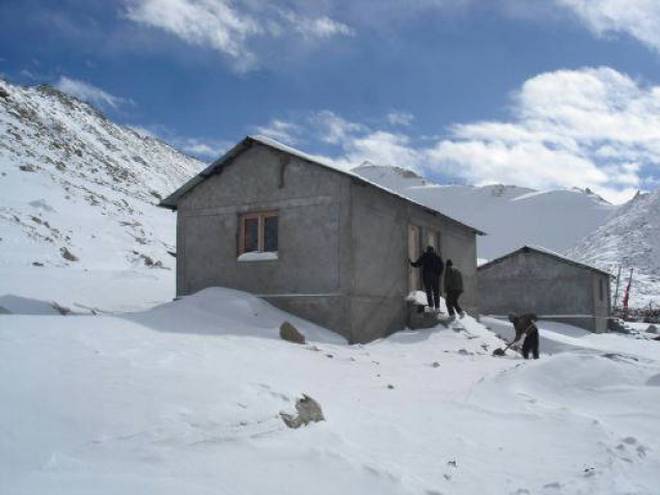Chang La seed vault
This is a collection of articles archived for the excellence of their content. |
Established Dec 2017
Sarah Hiddleston, A repository of seeds on cliff top of Himalayas, February 17, 2018: The Hindu

From: Sarah Hiddleston, A repository of seeds on cliff top of Himalayas, February 17, 2018: The Hindu
It is India’s doomsday vault. If the land lies cracked and barren waiting for the rain, if the sea swallows coastal paddy fields, if plagues of pests wipe crops out of existence, India has an insurance policy – a set of seeds carefully preserved in permafrost, ready to be restored, that can be cultivated and sown to feed its people.
Nestled 17,500 feet high on a cliff top in the Himalayas, Chang-La has the sub zero temperatures and low humidity necessary to suspend seed life for future generations. It is a site carefully chosen. It is far from rising seas and tectonic plate movement but around 75 km from the Leh aiport, it is close enough to human civilisation today to deposit the country’s agricultural heritage with ease.
“India is a herbal garden…. It is now getting threatened or endangered or extinct… There is a dire necessity to preserve this rich wealth of biodiversity, which exists in India to give it to the next generation,” W. Selvamurthy, distinguished scientist and Chief Controller (R&D), Ministry of Defence, told The Hindu.
Chang-La, opened last December, now holds 5,000 seeds from the Ministry of Defence, prioritised for qualities such yield or resistance to temperature, pests or humidity. But its total capacity is 10 times that and, says Selvamurthy, government departments, research organisations and more are welcome to store useful and viable seeds for free. Their qualities will be digitally indexed and available through open access software to further science globally.
This facility aims to rival that at Svalbard in Norway, which can hold up to 3 million seed varieties, by opening up its vaults to the international community. For that to happen, India will have to install a cooling system for the 15 days a year when the temperatures peak to -4 degrees. So even if something happens at high latitude in Norway, there will be a back up at high altitude in India.
Crop seeds, developed slowly and carefully over thousands of years, are not only the source of sustenance for humankind but the best repository of genetic material scientists can use to help develop food resistant to the vagaries of climate change. Transgenic cropping to ensure that our grains, pulse and vegetables can reproduce at high altitudes, in salty water, less water and high temperatures, is essential to provide future generations with the same opportunities of today, he says.